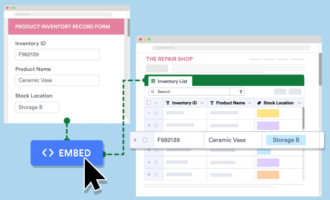The benefits of asset management
Asset management enables organizations to maximize the value of their assets throughout the different stages of the asset lifecycle. It helps organizations reduce redundant or unused assets, properly maintain and repair assets, and purchase new assets as needed to help improve operations. The benefits of asset management include improving the bottom line, reducing risk, and streamlining processes.
But those are just a few of the benefits of asset management. Here are some other ways that effective asset management can help your organization.
1. Optimize resources
Does your organization have several desktop computers sitting in storage collecting dust? How about a piece of machinery that’s getting too much use in the factory? With asset management, you can optimize the use of each of your resources.
By optimizing resources, you won’t make redundant purchases and can properly use assets so you don’t need to retire an asset before the expected due date. As a result, you can avoid making unexpected repairs or purchases and stop losing money in investments that aren’t bringing value to your business.
2. Forecast accurately
Like any strategic initiative, asset management can help you plan for the future. Asset management isn’t only about overseeing a company’s current assets; it’s also about forecasting the company’s future asset inventory.
For example, how many new computers and software licenses will you need to purchase as your company grows, or when will you need to replace the equipment on the production line? Asset management can accurately answer these questions and more.
Matt Picheny, an experienced real estate asset manager, puts emphasis on establishing KPIs and tracking them frequently to gather helpful data to make decisions. “In real estate, for example, we track occupancy trends and predictions, payment delinquencies, move-in and move-out rates, time to close work orders, and many other metrics.”
3. Ensure compliance
In many industries — like financial services, healthcare, and government — compliance plays a critical role in everyday operations. Not maintaining compliance can result in fines, penalties, or even more severe repercussions like workplace injuries or security breaches. For example, you might need to know if the latest update to your security software is installed on all of your hardware, or if the forklifts have undergone their annual safety inspection.
Asset management keeps track of this information and more, so organizations can prioritize compliance, reduce risk, and mitigate any legal issues.
4. Prevent theft and loss
Tracking assets and their every move within an organization is a major component of asset management. Tracking minimizes potential theft and loss, particularly of smaller and portable assets like retail products and computer hardware, but it can also apply to larger assets like machinery or vehicles.
In many industries, organizations tag each asset with a barcode or a GPS tracker so it’s easy to always know its precise location. Through asset management, organizations can reduce their budget for replacing lost or stolen assets.
Loss and theft also differ based on the industry and the type of asset: “In real estate, for example,” says Picheny, “loss includes loss of lease or bad debt.” He notes that asset managers first need to understand the cause of the loss to be able to prevent it.
5. Prolong the life of each asset
Every asset — whether it’s a building, a computer, or a vehicle — requires proper maintenance and care. Even software needs frequent updates for it to work properly. Asset management focuses on maximizing value, which includes repairing, maintaining, and caring for each asset to prolong its life for as long as possible.
Through this process, organizations can purchase new assets less frequently, as they don’t need to retire them or dispose of them as quickly.
Picheny says that having a business strategy is vital in asset management: “Sometimes you need to pivot based on black swan events, like COVID-19, for example. For us, we stopped property improvement efforts during this time and instead allocated those resources to helping our tenants get government assistance so they could stay in their units.”
Want to take advantage of the benefits of asset management in your organization? Be sure to create an overarching asset management strategy, and consider each phase of the asset lifecycle for the best results.




































































Send Comment: